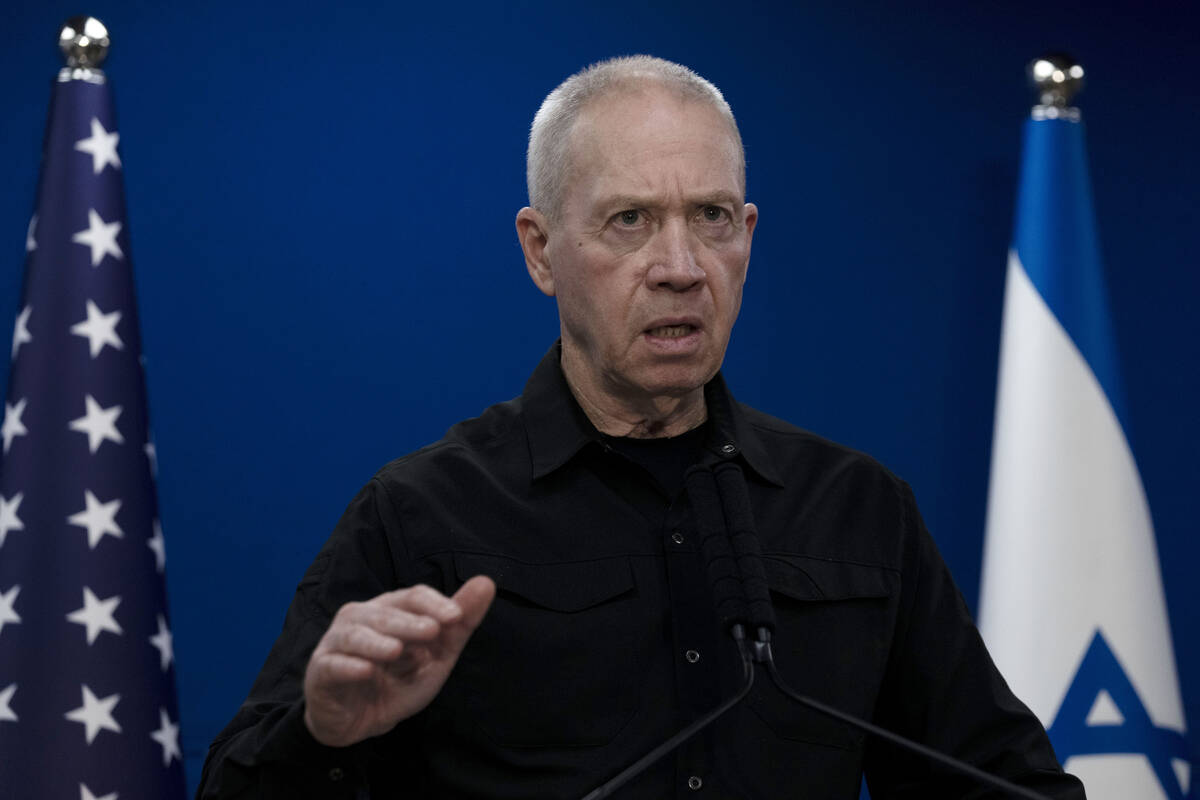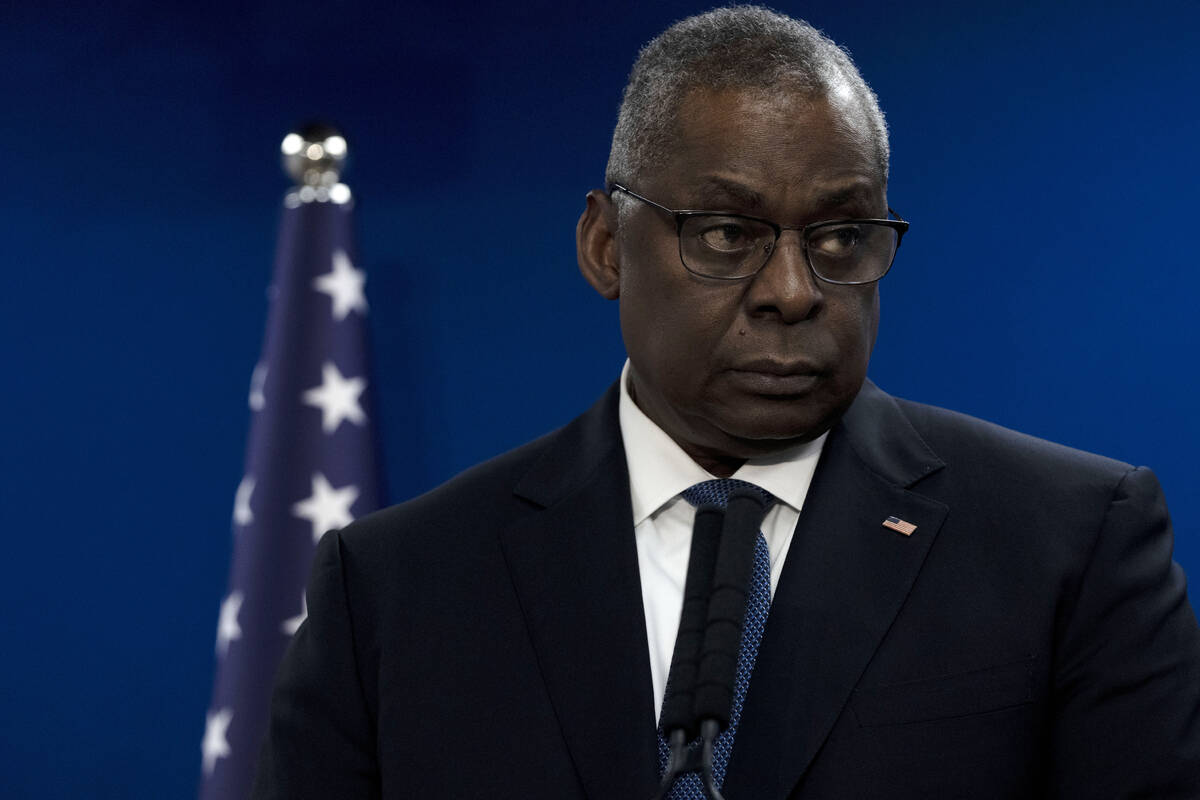U.S., Israeli officials discuss more targeted approach
TEL AVIV, Israel — The head of the CIA jetted to Europe for talks with Israeli and Qatari officials Monday, sounding out the potential for a deal on a new cease-fire and the release of hostages in Gaza, as the U.S. defense secretary spoke to Israeli military leaders about scaling back major combat operations against Hamas.
Still, there was no sign that a shift in the war was imminent after more than two months of bombardment and fighting. Fierce battles raged in northern Gaza.
Pressure is growing, as France, the U.K. and Germany — some of Israel’s closest allies — joined global calls for a cease-fire over the weekend. Israeli protesters have demanded the government relaunch talks with Hamas on releasing more hostages after three were mistakenly killed by Israeli troops while waving a white flag.
U.S. officials have repeatedly expressed concern about the large number of civilian deaths in Gaza.
But after talks with Israeli officials Monday, Defense Secretary Lloyd Austin said, “This is Israel’s operation. I’m not here to dictate timelines or terms.”
The U.S. has vetoed calls for a cease-fire at the U.N. and has rushed munitions to Israel.
The U.N Security Council delayed a vote to Tuesday on an Arab-sponsored resolution calling for a halt to hostilities to allow unhindered access to humanitarian aid. Diplomats said negotiations were taking place to get the U.S. to abstain or vote “yes” on the resolution.
Prime Minister Benjamin Netanyahu has insisted that Israel will keep fighting until it ends Hamas rule in Gaza, crushes its military capabilities and frees hostages still held in Gaza since the deadly Oct. 7 attack inside Israel that ignited the war. Terrorists killed some 1,200 people and abducted 240 others in the attack.
Israel’s military says 127 of its soldiers have been killed in the Gaza ground offensive. It says it has killed thousands of terrorists.
Hostage talks
In an apparent sign that talks on a hostage deal were growing more serious, CIA Director William Burns met in Warsaw with the head of Israel’s Mossad intelligence agency and the prime minister of Qatar, a U.S. official said.
It was the first known meeting of the three since the end of a weeklong cease-fire in late November, during which some 100 hostages — including a number of foreign nationals — were freed in exchange for the release of around 240 Palestinians held in Israeli prisons.
National Security Council spokesperson John Kirby said the talks were not “at a point where another deal is imminent.”
Aiming to increase public pressure on the Israeli government, Hamas released a video showing three elderly Israeli hostages, sitting in white T-shirts and pleading for Israel to bring their immediate release.
The comments were likely made under duress, but the video signaled Hamas wants to move on to discussions of releasing sick and elderly men in captivity. Israel has said it wants around 19 women and two children freed first.
Hamas says the women include soldiers, for whom it is expected to demand a higher price in terms of prisoner releases.
Hamas and other terrorists are still holding an estimated 129 captives. Hamas has said no more hostages will be released until the war ends.
Scaling down the war
Austin, who arrived in Israel with Joint Chiefs Chairman Gen. CQ Brown, said he and Israeli officials exchanged “thoughts on how to transition from high intensity operations” in Gaza and how to increase the flow of humanitarian aid.
American officials have called for targeted operations aimed at killing Hamas leaders, destroying tunnels and rescuing hostages. President Joe Biden warned last week that Israel is losing international support because of its “indiscriminate bombing.”
Speaking alongside Austin, Israeli Defense Minister Yoav Gallant said only that “the war will take time.”
Israeli military spokesman Daniel Hagari said the Israeli chief of staff met with Austin and Brown and presented “plans for the continuation of the battle in the coming stages.”
Hamas has been designated as a terrorist organization by the United States, Canada and the European Union.
But European countries appear to be losing patience. “Far too many civilians have been killed in Gaza,” EU foreign policy chief Josep Borrell posted on X.
Under U.S. pressure, Israel provided more precise evacuation instructions earlier this month as troops moved into the southern city of Khan Younis.
Israel reopened its main cargo crossing with Gaza to allow more aid in — also after a U.S. request.
Death and destruction
At least 110 people were killed in Israeli strikes Sunday on residential buildings in the urban Jabaliya refugee camp in northern Gaza, Munir al-Boursh, a senior Health Ministry official, told Al Jazeera television.
The Israeli military released pictures of what it said was around $1.3 million in Israeli currency found in the home of a senior Hamas operative in the camp.
Fierce fighting continued Monday in Jabaliya and the Gaza City districts of Zaytoun and Shijaiyah.
More than 19,400 Palestinians have been killed, according to the Health Ministry. The ministry does not differentiate between civilian and combatant deaths.
Israel blames civilian deaths on Hamas, saying it uses them as human shields.
Regional tensions
In Bahrain early Tuesday, Austin said that the U.S. and other nations have created a new force to protect commercial ships passing through the Red Sea from attacks by Yemen’s Houthi rebels.
The Houthis say their attacks aim to end Israel’s offensive in Gaza, and their campaign has prompted a growing list of companies to halt operations in the major trade route.
“This is an international challenge that demands collective action,” Austin said in statement.
Israel and Lebanon’s Hezbollah have traded fire along the border nearly every day since the war began. And in the West Bank, over 300 Palestinians have been killed since the start of the war.
———
Lidman reported from Jerusalem and Magdy from Cairo. Associated Press writers Lolita C. Baldor and Ellen Knickmeyer in Washington and Edith M. Lederer at the United Nations contributed to this report.



















